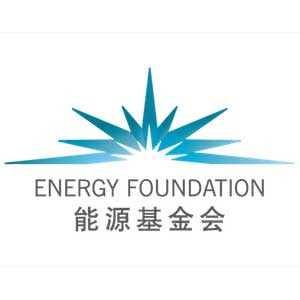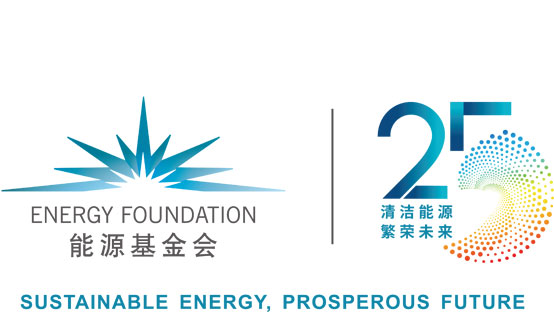Improvement in Air Quality and Reduction of GHGs at the Same Time

In China, air pollution is arguably the most pressing environmental problem. In the meantime, climate change is the most serious environmental crisis in the world. And the two are highly correlated. “For 20 years, Energy Foundation China has committed to air quality improvement, viewing it as an important strategic opportunity to reduce GHG emissions. We have provided support to researches and international exchanges for the formulation, upgrade, and implementation of relevant regulations, standards, and systems, and actively promoted coordinated controls to achieve synergy. We believe that the co-control framework that we have pushed will play an increasingly more important role with implementation and improvement in the future,” said Mr. Liu Xin, director of the Environmental Management Program at EF China.
Improving Top-Down Design of Atmospheric Management to Promote Coordinated Control
The most important legal basis for fighting air pollution is the Law on the Prevention and Control of Atmospheric Pollution. China’s Air Law was first enacted in 1987, then revised in 1995 and 2000. Back then, its prevention and control of soot-heavy air pollution was effective and remarkable. However, upon entering the new century, it became increasingly difficult for the law to contain the rapidly changing pollution picture and fight a new and complicated set of atmospheric pollutants. The result was an explosion of smog across China. Faced with such a situation, EF China began to call for an upgrade of the law, providing much-needed analysis and education along the way. In 2009, it supported publicly-released research that proposed 5 directions and 13 areas for optimized management of air pollutants, based on international experiences. Specifically, it pushed for: the establishment of a management system with air quality standards at its heart; enhanced implementation of attainment planning and management of non-attainment regions; a discharge permit system for stationary sources of pollution; innovation in energy-saving and emission reductions in industries; improvement in mobile source control on fossil fuel automobiles and fuel quality; formulation of low-emission transportation planning; establishment of regional air quality management offices to control both GHGs and atmospheric pollutants; strengthening of policy co-ordination over energy and environmental issues; establishment of regulatory measures and trading systems with regard to electricity, transportation, and industry, aiming for energy conservation and emission reductions. This research was held in high regard by the former Ministry of Environmental Protection (MEP, now the Ministry of Ecology and Environment) and reflected in local anti-pollution regulation in Beijing.
At the time, the United States was already a global leader in the formulation and implementation of regulations and standards related to air pollution control. It boasted huge potentials in providing positive experience to the improvement of China’s atmospheric management. Since 2009, EF China has provided support to the annual Conference of Sino-U.S. Regional Air Quality Management, facilitating regular exchanges on air pollution control between the Chinese ministry in charge of environmental affairs and the U.S. Environmental Protection Agency. It also helped officials and experts go to the United States and learn about local experiences on dealing with pollution. China was a good student, learning about the various aspects of air pollution fighting, such as cap control, quality management, attainment planning, pollutant discharge permits, system of standards, and coordinated control.
In 2013, the National People’s Congress and the MEP launched the revision process of the Air Law. EF China took this opportunity to support extensive analysis concerning attainment planning, transferable discharge permits, supervision of law enforcement, information disclosure, and coordinated control, with air quality standards at the core. In late 2014 and April 2015, it also sponsored two seminars on the issues.
Along with its partners and various stakeholders, EF China was excited to witness the birth of “China’s strongest air law in history” in 2015, with official implementation in 2016. The newly revised legislation contained many things that had been thoroughly studied by our grantees, such as a management system with air quality at the core and strengthening of source control; in addition, coordinated control of GHGs and criteria pollutants appeared for the first time as part of a law.
Exploring the Path of Co-Control in Practice
A key focus of EF China was the exploration of effective coordinated control methods and their implementation.
In September 2013, the Chinese government issued the five-year National Action Plan for Air Quality in order to promote a major clean-up of air pollutants throughout the country. During its implementation, some key regions encountered difficulties with regard to matters on enforcement. In 2014, EF China provided support to Tsinghua University to research whether the Beijing-Tianjin-Hebei region can achieve its 2017 goal on PM2.5 improvement. The study was regarded by many stakeholders as being very helpful to the success of the action plan, with rigorous analysis covering the following areas: mandatory coal selection and processing and ban on the use of high-sulfur coal in the region, installing diesel particulate filter for existing fleet of vehicles, reduction of steel production in the Hebei province, and comprehensive upgrade of pollution control for steel, cement, coking enterprises—all of which are about of source control measures with synergistic benefits. One of the people who praised the research was Zhang Gaoli, China’s Deputy Premier at the time, prompting the MEP to come up with an directive for enhanced air pollution control in the region (2016-2017) and other similar plans which strengthened the control of disaggregated coal, polluting enterprises, steel and building materials production, and diesel vehicle related pollution.
In 2017, the action plan reached it final year. In order to strengthen air pollution control for the coming years, EF China provided support to Tsinghua to carry out a follow-up research to analyze effectiveness of measures related to source control, such as structural adjustment in energy, industry, and transportation, on air pollution control, and the synergistic effect on the reduction of carbon emissions. This research report was later submitted to relevant experts at the State Council. In June 2018, China renewed the monumental air effort with a three-year Action Plan for Blue Sky. It proposed major structural adjustments in four key areas: industry, energy, transportation, and land use.
From 2013–2018, the annual average concentration of PM2.5 in major cities nationwide fell by 30 percent, with that of Beijing falling by 43 percent, thanks to the implementation of the law, the five-year action plan, and the new three-year action plan. And the clean heating initiative reached over 10 million households in the rural area with elimination and substitution of disaggregated coal as an objective. According to Tsinghua’s evaluation of the five-year action plan’s synergistic effect, sulfur dioxide, nitrogen oxides, and PM2.5 fell by 59, 21, and 33 percent respectively across the nation, while carbon dioxide emissions fell by 3 billion tonnes.
In March 2018, China decided to establish the Ministry of Ecology and Environment (MEE), and transfer climate change management functions to the newly created ministry, providing a favorable institutional arrangement for the coordinated control of criteria pollutants and GHGs. In June 2019, the MEE and EF China signed the Framework Agreement on Cooperation (2019–2023). According to the agreement, the two sides plan to carry out in-depth cooperation in policy research, capacity building, pilot projects, and international cooperation and communications with regard to coordinated control of air quality and climate change during the next five years.
Zhao Yingmin, Vice Minister of Ecology and Environment, said at the signing ceremony of the cooperation agreement that EF China has steadfastly supported China’s environmental protection and climate change efforts, and engaged in green and low-carbon work throughout the years. He also commended EF China’s outstanding contributions, along with other organizations, toward the country’s achievements in environmental development.
Clean air and climate safety are extremely important to people’s pursuit of a better life. The strategy of co-control provides an efficient and viable solution for the biggest environmental problems we face. “With the continuous advancement of air quality management and GHG emission reductions, EF China is expanding the breadth and depth of coordinated control, to include various pollutants such as PM2.5 and ozone, criteria pollutants and GHGs, and carbon dioxide emissions and non-carbon dioxide emissions. And by promoting accelerated compliance of urban air quality standards, we seek to achieve higher goals with the reduction of both criteria pollutants and GHG emissions, and help China attain world-class air quality and climate safety,” Mr. Liu said.



